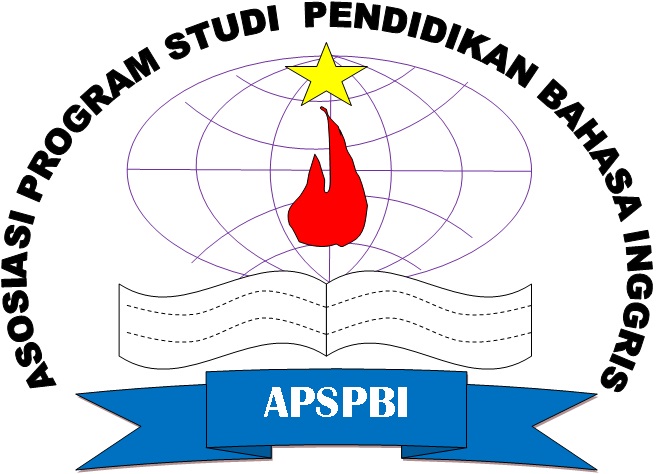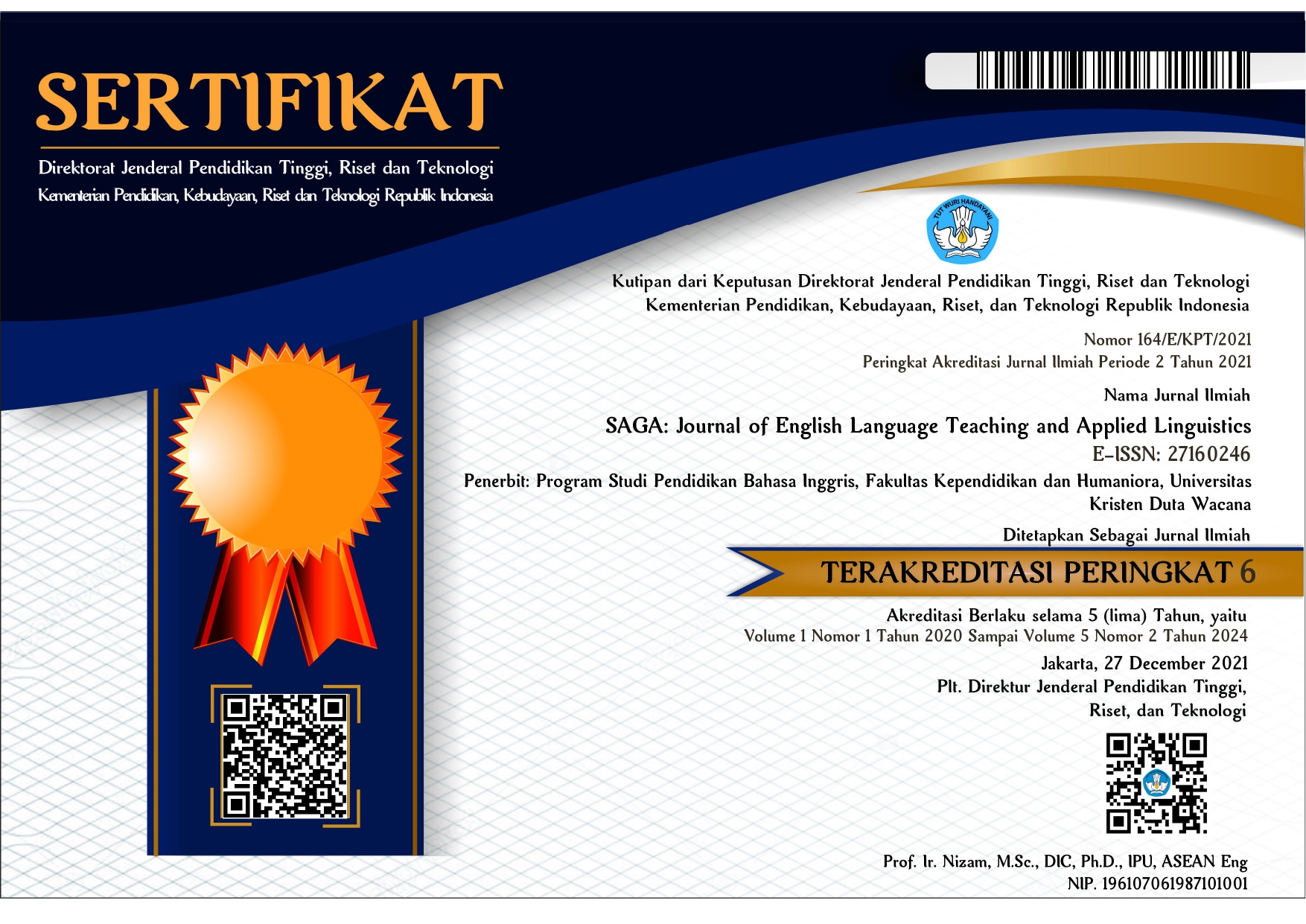The Use of Graphic Organizer Strategies to Improve Students' Writing Skills in English Language Teaching
DOI:
https://doi.org/10.21460/saga.2024.51.182Keywords:
Graphic Organizer Strategy; Writing Skills; English Language Teaching (ELT)Abstract
This research is motivated by the weak ability of students' writing in learning English. This research was conducted with the aim of improving English language skills, especially writing skills through the use of the graphic organizer strategy. This research was conducted on first semester students at Billfath Lamongan University. The subjects of this research were students of the English program from several research programs totaling 34 students. This research uses a Classroom Action Research design by Kemmis and Mc Taggart model in four stages, namely planning, implementing action, observing, and reflecting. The results of the preliminary test showed that students' writing skills were still low. The results of the assessment on the practice of writing texts using the assessment rubric show that there are still many students who have not reached the mark according to the criteria. The percentage of scores obtained by students are dominated by the "poor" criterion with 41%, fair 32%, good 18%, very poor 9%, and excellent 0%. While, the students' competence increased and has reached the specified minimum completeness criteria in the final test. The percentage of scores obtained by students are dominated by the "good" criterion with 50%, excellent 32%, fair 18%, poor 0%, and very poor 0%. The results of this research prove that the use of the graphic organizer strategy significantly improves students' writing skills and also has a positive impact on students' attitudes toward learning English.
References
Al Halim, M. L., & Arifin, M. (2022). The effect of picture series on teaching English writing. Pioneer: Journal of Language and Literature, 14(2), 409–422.
Asrifan, A., Vargheese, K. J., Syamsu, T., & Amir, M. (2020). ESP course design: The need analysis on tourism department in Indonesia vocational high schools. Journal of Advanced English Studies, 3(2), 69–77.
Bean, J. C., & Melzer, D. (2021). Engaging ideas: The professor’s guide to integrating writing, critical thinking, and active learning in the classroom. John Wiley & Sons.
Bereiter, C. (2016). Development in writing. In Cognitive processes in writing (pp. 73–93). Routledge.
Cavdar, G., & Doe, S. (2012). Learning through writing: Teaching critical thinking skills in writing assignments. PS: Political Science & Politics, 45(2), 298–306.
Cole, J., & Feng, J. (2015). Effective strategies for improving writing skills of elementary English language learners. Proceedings of the Chinese American Educational Research and Development Association Annual Conference, Chicago.
Daniels, S. (2020). Visual Learning and Teaching: An Essential Guide for Educators K–8. Free Spirit Publishing.
Evmenova, A. S., Regan, K., Boykin, A., Good, K., Hughes, M., MacVittie, N., Sacco, D., Ahn, S. Y., & Chirinos, D. (2016). Emphasizing planning for essay writing with a computer-based graphic organizer. Exceptional Children, 82(2), 170–191.
Glanz, J. (2014). Action research: An educational leader’s guide to school improvement. Rowman & Littlefield.
Gollins, A., & Gentner, D. (2016). A framework for a cognitive theory of writing. In Cognitive processes in writing (pp. 51–72). Routledge.
Graham, S., Bollinger, A., Olson, C. B., D’Aoust, C., MacArthur, C., McCutchen, D., & Olinghouse, N. (2012). Teaching elementary school students to be effective writers: A practice guide. NCEE 2012-4058. ERIC. https://eric.ed.gov/?id=ED533112
Hyland, K. (2019). Second language writing. Cambridge University Press.
Latief, H. M. A. (2016). Penelitian Tindakan Kelas Pembelajaran Bahasa Inggris. Jurnal Ilmu Pendidikan, 10(2).
Maharani, M. M. (2018). Graphic organizers to improve students’ writing on recount paragraphs. Metathesis: Journal of English Language, Literature, and Teaching, 2(2), 211–221.
Moline, S. (2013). Using graphic organizers to write information texts. In The Writing Classroom (pp. 127–142). Routledge.
Pratama, S., Rahmawati, I. N., & Irfani, B. (2017). Graphic Organizer as One Alternative Technique to Teach Writing. English Education: Jurnal Tadris Bahasa Inggris, 10(2), 334–357.
Praveen, S. D., & Rajan, P. (2013). Using Graphic Organizers to Improve Reading Comprehension Skills for the Middle School ESL Students. English Language Teaching, 6(2), 155–170.
Puspitarini, Y. D., & Hanif, M. (2019). Using Learning Media to Increase Learning Motivation in Elementary School. Anatolian Journal of Education, 4(2), 53–60.
Sa’diyah, H. (2017). Improving students’ability in writing descriptive texts through a picture series-aided learning strategy. The English Teacher, 19.
Sadiku, L. M. (2015). The importance of four skills reading, speaking, writing, listening in a lesson hour. European Journal of Language and Literature, 1(1), 29–31.
Shoari, E., & Farrokhi, F. (2014). The effects of graphic organizer strategy on improving Iranian EFL learners’ vocabulary learning. Research in English Language Pedagogy, 2(1), 71–82.
Wangzom, P. (2019). The use of graphic organizers in teaching history to grade seven students in Bhutan. St. Theresa Journal of Humanities and Social Sciences, 5(2), 44–69.
















